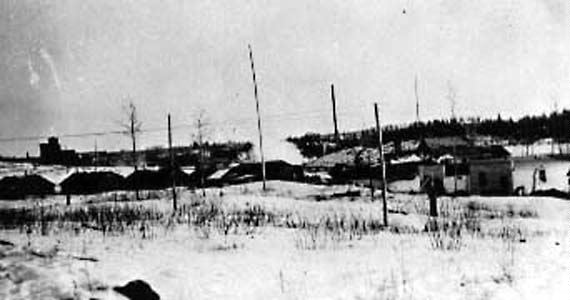Search | Image Archive | Reference | Communities | POV | Lesson Plans | Credits
 In 1912, an Act of the Dominion government more then doubled the size of the province of Manitoba, extending its northern boundary from the 53rd Parallel to Hudson Bay. These new lands were largely rocky marshland associated with the fur trade, but having little immediate relevance to the Manitoba economy, which was highly focused the growing of cereal grains.
In 1912, an Act of the Dominion government more then doubled the size of the province of Manitoba, extending its northern boundary from the 53rd Parallel to Hudson Bay. These new lands were largely rocky marshland associated with the fur trade, but having little immediate relevance to the Manitoba economy, which was highly focused the growing of cereal grains.
While the extension of the boundaries was deemed insignificant by many, others felt that the North held the prospect of mineral wealth, and some began prospecting the Precambrian shield. The hopes of the prospectors were realized with the discovery in 1915 of a substantial body of copper ore. Excavation began in the spring of 1916 at the Mandy Mine southeast of what was to become the community of Flin Flon.
For five years, the Mandy camp became a hub of activity. Miners and labourers lived in barracks-style accommodations. The mine employed only about fifty workers, and the vast majority of the workforce, the over three hundred teamsters involved in shipping the ore, resided in The Pas or in work camps along the portages. The first ore body was not large enough to warrant the construction of a smelter, but the inflated copper prices during the War made it viable to haul the ore by barge and winter cart train to The Pas, where it was loaded on trains and shipped to British Columbia for smelting.
The ore at Mandy was worked-out by 1920, but the community remained as an advance prospector camp. Gold had been found in 1914 at what was to become the Flin Flon mine, and by the mid 1920s, there was a mine at Flin Flon and a railway was being constructed to connect the community to The Pas. Only then was a more community with a greater sense of permanence established.
Page revised: 29 August 2009